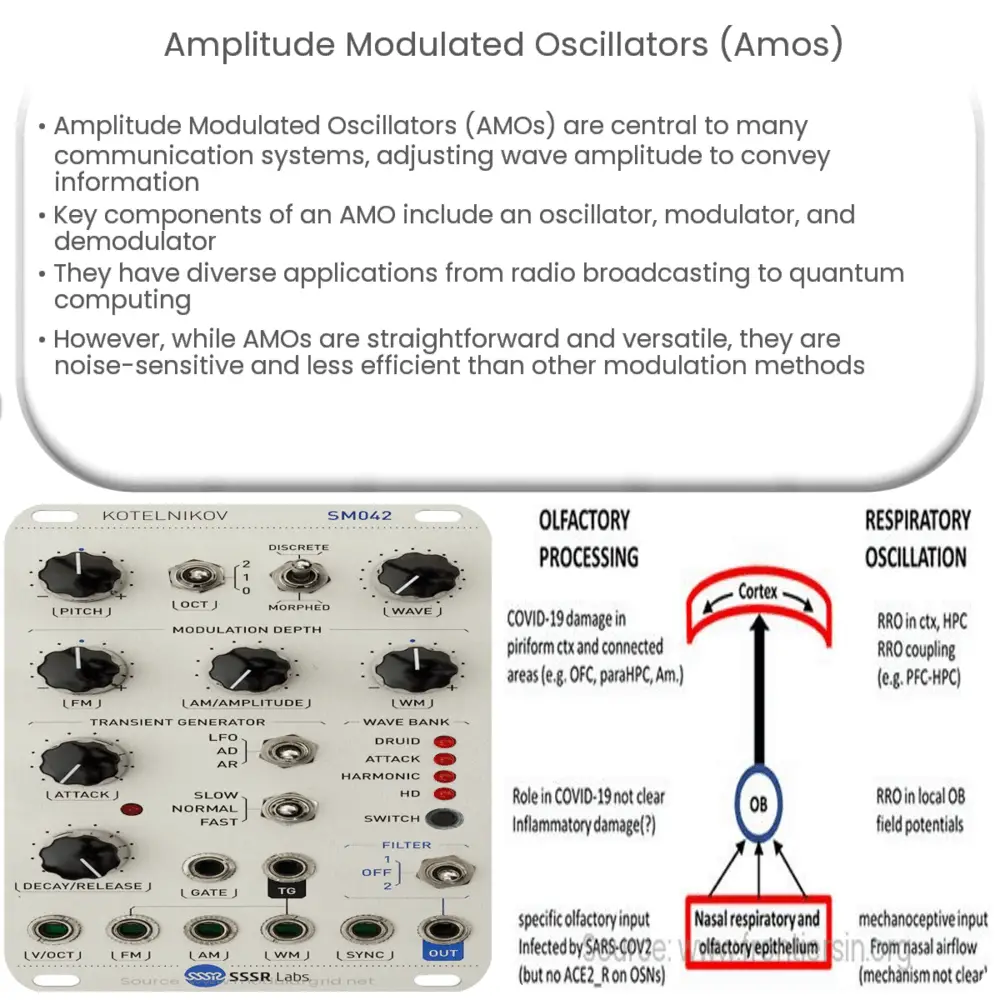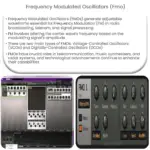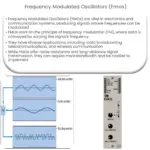Amplitude Modulated Oscillators, commonly referred to as AMOs, represent a central element in numerous communication systems. They are fundamental in radio broadcasting, television broadcasting, and satellite communication, just to mention a few.

Introduction to Amplitude Modulated Oscillators (AMOs)
Amplitude Modulated Oscillators, commonly referred to as AMOs, represent a central element in numerous communication systems. They are fundamental in radio broadcasting, television broadcasting, and satellite communication, just to mention a few. Their primary function is to generate a signal wave with varying amplitude according to the information being transmitted.
Principles of AMOs
Understanding the principles behind AMOs requires a solid grasp of the fundamental concepts of signal modulation. In a nutshell, modulation refers to the process of changing specific properties of a carrier wave, such as its frequency or amplitude, according to an information signal, which is often called the modulating signal. In the case of AMOs, the amplitude of the carrier wave is modified to align with the modulating signal.
Key Components of an AMO
Every AMO typically comprises three key components: the oscillator, modulator, and the demodulator.
AMO’s Implementation in Technology
AMOs have found extensive application in a wide range of communication systems. In the early days of radio broadcasting, AMO systems were the only available technology for transmitting audio signals. Today, AMOs are used in a host of applications from RFID systems, wireless networking devices, to advanced satellite communications.
AMOs are also critical in the field of quantum computing. Here, they help in the manipulation and control of qubits — the fundamental units of quantum information. By modulating the amplitude of microwave pulses, AMOs enable the precise control of qubit states, which is crucial in executing quantum algorithms.1
The Operation of AMOs
How exactly does an AMO work? Let’s consider a simple example of an AMO system, a radio broadcasting system. Here, the audio information to be transmitted (like music or speech) acts as the modulating signal. This signal is then used to vary the amplitude of a high-frequency carrier wave generated by the oscillator. This results in an amplitude-modulated signal which retains the frequency of the carrier wave but varies in amplitude according to the modulating signal.
The modulated signal is then transmitted over a radio frequency band, and any radio receiver tuned to that frequency band can pick up the signal. The receiver employs a demodulator to extract the original audio information from the modulated signal, converting it back into a format that can be outputted through a speaker.
Advantages and Limitations of AMOs
Conclusion
Amplitude Modulated Oscillators (AMOs) have been instrumental in the field of wireless communication since the early days of radio and television broadcasting. Their principle of operation, which involves modifying the amplitude of a carrier wave to encode information, provides a simple yet efficient means of signal transmission. Despite their susceptibility to noise and relative inefficiency compared to other modulation techniques, AMOs continue to play a vital role in numerous applications today, ranging from RFID systems and wireless networking devices to advanced quantum computing.
As technology continues to advance, it’s plausible that the capabilities of AMOs will be further enhanced, expanding their potential applications and effectiveness. As we keep pushing the boundaries of communication technology, the fundamental principles underlying AMOs will remain relevant and continue to influence future breakthroughs.




